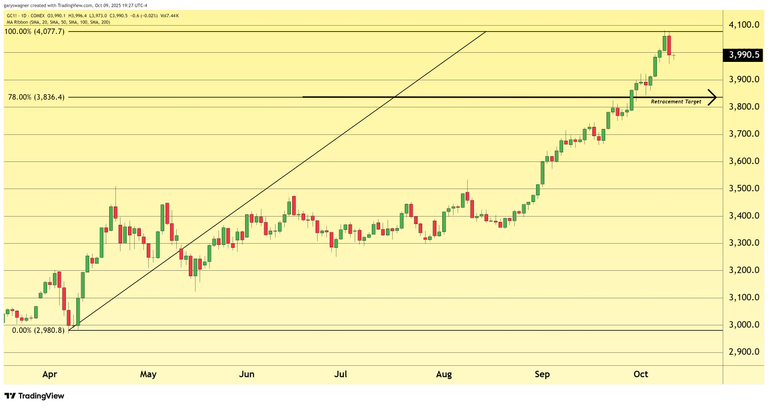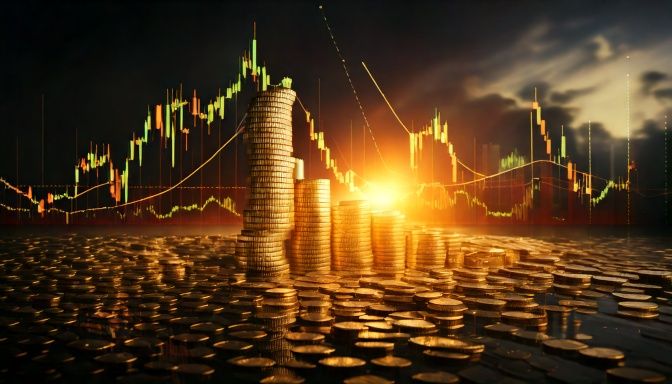Gold futures experienced their first notable decline since August on Thursday, with contracts dropping $69.50, or 1.71%, to settle at $3,991.10. This marked the most significant pullback since August 11th, occurring amid dual pressures from easing geopolitical tensions and a strengthening U.S. dollar. The selloff appears partly driven by reduced safe-haven demand, following reports of cease-fire negotiations between Israel and Hamas. Concurrently, the dollar gained considerable strength, rising 0.50% to reach a two-month peak of 99.39. This resurgence of the greenback typically exerts downward pressure on gold prices, making the commodity more expensive for holders of other currencies.
Despite the decline on Thursday, market dynamics indicate that this is more a case of profit-taking than a fundamental shift in gold's upward trajectory. The precious metal's brief rise above the psychologically significant $4,000 level seems to have triggered natural selling pressure from traders aiming to realize gains. Historical trends suggest that substantial pullbacks following key milestones often attract buyers looking for more favorable entry points.

Recent data from the World Gold Council highlights the robust institutional support driving gold's rally. Global physically backed gold exchange-traded funds recorded extraordinary inflows during the third quarter, attracting a record $26 billion in new investments, with September alone marking the largest monthly inflow on record for these vehicles. North American investors led this surge with $16.1 billion in allocations, representing the largest third quarter and the second-largest quarter ever recorded for the region. European funds contributed an additional $8.2 billion, just $74 million shy of their record from the first quarter of 2020, while Asian markets showed more modest inflows of $1.7 billion.
These substantial inflows have pushed global gold ETF assets under management to unprecedented levels, reaching $472 billion by the end of the quarter—a 23% quarterly increase. Total holdings rose 6% during this period to 3,838 metric tons, nearing the November 2020 peak of 3,929 tons.
The surge in retail participation through ETF investments presents both opportunities and challenges for market observers. This influx reflects a broadening interest beyond traditional institutional and central bank buyers; however, retail investors historically display greater price sensitivity and a tendency for rapid position adjustments compared to their institutional counterparts, who typically maintain longer investment horizons and are less reactive during market volatility.
This enthusiasm among retail investors warrants careful monitoring, as historical precedents show that substantial retail participation often occurs in the latter stages of bull markets and may signal upcoming corrections. The tendency for retail investors to be "the last to arrive at the party" has been observed across various asset classes and market cycles.
Nonetheless, the fundamental drivers supporting precious metals remain largely intact. Persistent inflation concerns, monetary policy uncertainties, geopolitical tensions beyond the Middle East, and central bank diversification strategies continue to provide significant support for gold and silver. As long as these underlying dynamics remain unchanged, the precious metals complex appears poised to potentially set new record levels, although investors should be aware of the increased volatility that often accompanies heightened retail participation.
In this current market environment, while tactical corrections may arise, the strategic case for exposure to precious metals remains compelling. Investors are encouraged to view pullbacks within the broader uptrend and to stay attuned to the evolving participant mix and its potential implications for near-term price action.
For those that would like more information about our services click here
Wishing you as always good trading,

